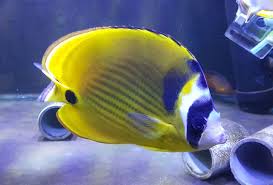
Flowers, with their beauty and functionality, play a pivotal role in fostering sustainable and biodiverse environments worldwide. Beyond their aesthetic appeal, flowers serve as vital components of ecosystems, supporting pollinators, enhancing soil fertility, and contributing to overall ecosystem health. Understanding the multifaceted roles of flowers is essential for promoting environmental sustainability and preserving biodiversity.
**1. Pollinator Support:**
Flowers are essential for the survival of pollinators, including bees, butterflies, birds, and bats. Through the process of pollination, flowers facilitate the transfer of pollen grains from male to female reproductive organs, enabling the production of seeds and fruits. This symbiotic relationship between flowers and pollinators is crucial for the reproduction of flowering plants and the maintenance of ecosystem diversity. By providing nectar and pollen as food sources, flowers attract and support a diverse array of pollinator species, contributing to the stability of ecosystems and agricultural productivity.
**2. Soil Health and Fertility:**
Flowers contribute to soil health and fertility through various mechanisms, including nutrient cycling, erosion control, and soil stabilization. Certain flowering plants, known as nitrogen-fixing legumes, have the ability to convert atmospheric nitrogen into a form that can be utilized by other plants, thereby enriching the soil with essential nutrients. Additionally, the root systems of many flowers help to prevent soil erosion by anchoring soil particles and improving soil structure. By promoting soil health and fertility, flowers play a crucial role in sustaining agricultural productivity and ecosystem resilience.
**3. Habitat Creation and Biodiversity Enhancement:**
Flowers are integral to the creation and maintenance of diverse habitats, providing food, shelter, and nesting sites for a wide range of organisms. Flowering plants form the foundation of terrestrial ecosystems, supporting diverse communities of insects, birds, mammals, and other wildlife. By offering a variety of floral resources, including nectar, pollen, seeds, and fruits, flowers attract and sustain a rich diversity of species, contributing to ecosystem stability and resilience. Furthermore, the presence of flowering plants enhances habitat complexity and connectivity, facilitating species interactions and ecological processes essential for biodiversity conservation.
**4. Climate Regulation:**
Flowers play a role in climate regulation by mitigating the impacts of climate change through carbon sequestration and temperature regulation. Through photosynthesis, flowering plants absorb carbon dioxide from the atmosphere and convert it into organic matter, thereby helping to reduce greenhouse gas concentrations and mitigate climate change. Additionally, the presence of vegetation, including flowers, can moderate local temperatures through shading and evapotranspiration, reducing the heat island effect in urban areas and buffering against extreme weather events.
**Conclusion:**
In conclusion, flowers are indispensable components of sustainable and biodiverse habitats, contributing to pollinator support, soil health, habitat creation, and climate regulation. By understanding and appreciating the vital roles of flowers in ecosystems, we can promote environmental sustainability and biodiversity conservation. Through conservation efforts, habitat restoration, and sustainable land management practices, we can ensure that flowers continue to flourish and fulfill their essential functions in creating healthy, resilient, and biodiverse ecosystems for generations to come.










